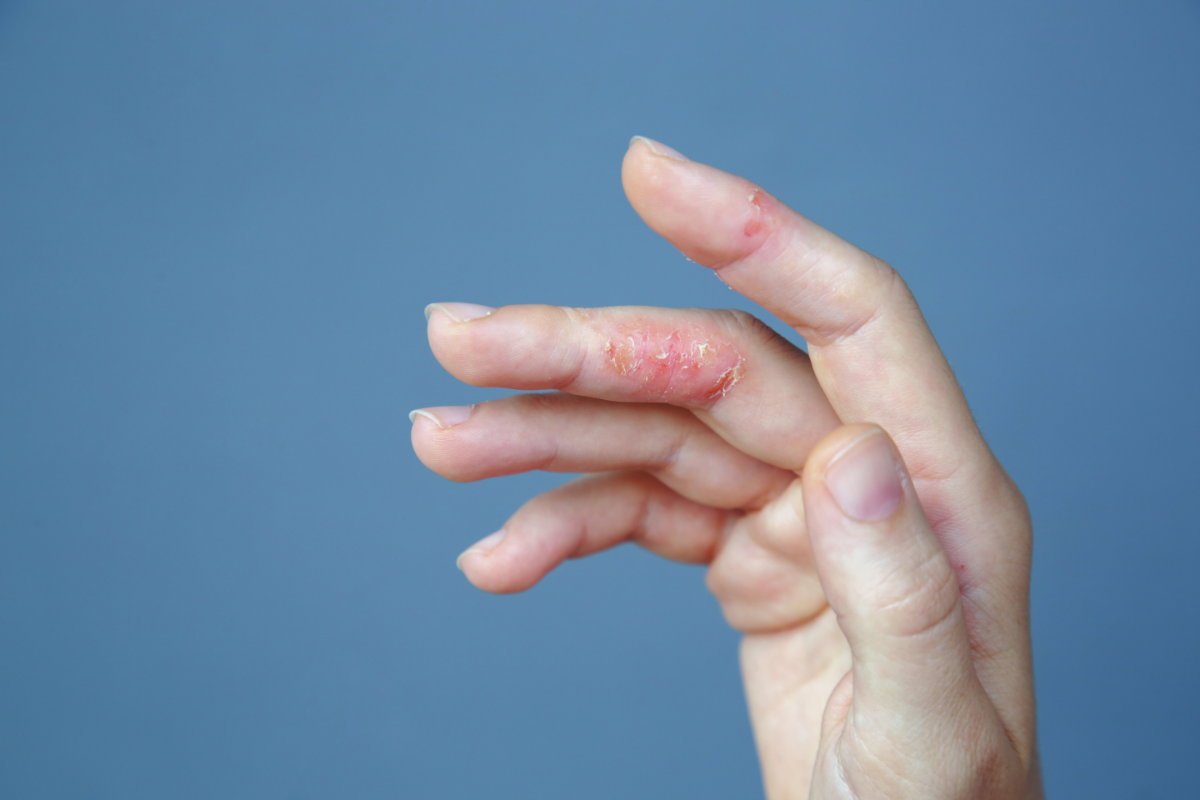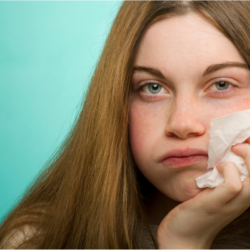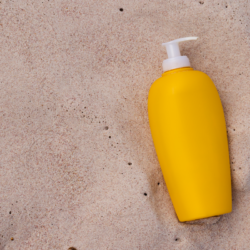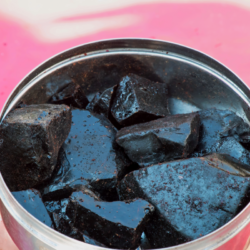Allergies, those often uncomfortable immune reactions, affect many of us. Whether it’s a reaction to pollen, pet dander or certain foods, symptoms such as sneezing, difficulty breathing, watery eyes or skin rashes can seriously affect our daily lives. These symptoms result from the release of histamine in our bodies, a natural response aimed at combating these foreign substances. Fortunately, there are natural solutions to reduce or prevent these discomforts. In this article, discover our expert advice on how to treat allergies effectively on a daily basis, in a natural and healthy way.
What are allergies?
Allergy is a hypersensitivity reaction characterised by an abnormal and specific response of the immune system to contact with a substance that it does not tolerate or no longer tolerates. This substance, the allergen, is generally foreign to the body and harmless to the majority of the population.
The allergic reaction nevertheless triggers a more or less strong immune response in the body.
Allergies can take different forms, however, and can range from simple redness to anaphylactic shock. Symptoms often appear unexpectedly in different parts of the body: the skin, the digestive system, the respiratory system and the eyes.
There are five types of allergy:
- respiratory (allergic rhinitis, asthma),
- skin (atopic dermatitis, urticaria),
- ocular (allergic conjunctivitis),
- food allergies (which have doubled in 5 years. Today, 6% of school-age children are affected)
- anaphylactic shock. The risk of anaphylactic shock increases with age. It is 5 times more frequent than it was 10 years ago.
What causes an allergy?
The causes of allergies are multifactorial.
While genetic predisposition has been proven, it is also clear that allergies have increased significantly over the course of the 20th century, and the curve is continuing to climb. Over the last twenty years, the various forms of allergy have doubled (allergic rhinitis has tripled in teenagers and young adults).
- This assessment clearly implicates the environmental factor. Atmospheric pollution, while not directly to blame, is an aggravating factor in the risk of allergies, because of the irritation it causes to the respiratory tract.
- Our homes, which are less and less ventilated, often overheated, sometimes confined and damp, encourage the proliferation of dust mites (responsible for 50% of allergic reactions). Domestic pollutants are also to blame (smoke from cooking, fireplaces, heating).
- Contact with our pets (dogs, cats, rodents, etc.) encourages allergies. But beware: people are not allergic to hair but to certain substances present in the saliva, dander or urine of animals.
- Smoking is a factor in triggering or aggravating asthma attacks.
- Certain plant pollens such as cypress or cedar are particularly allergenic.
- Our modern diet (industrial, protein-rich, with many food additives) is also to blame, as are cosmetics and synthetic products in general.
- From a hygienist’s point of view, the increasing aseptic nature of our daily environment, vaccinations and the use of antibiotics are all factors that encourage the development of allergies. In fact, contact with viruses and bacteria, by stimulating the immune system, makes it more effective. This explains why children who suffer from colds are less likely to develop allergies.
- Permeable mucous membranes also encourage allergic reactions. The role of intestinal flora is therefore major
Treating allergies naturally with homeopathy
Homeopathic treatment can be useful in preventing allergies and can accompany treatment, but should not replace conventional treatment, especially if the signs are severe (oedema, breathing difficulties, etc.)
Preparing allergens
If the allergen is known, homeopathic desensitisation can be carried out.
-
- Pollen allergy: Pollen is a homeopathic medicine containing a mixture of pollens responsible for the majority of pollen allergies. Take as a preventive measure: Pollens 15CH 1 dose per week for 1 month + 1 dose 1 month later +Lung histamine 15CH 5 granules in the evening throughout the period of exposure.
- Allergy to medicines: the doctor must use the INN (International Non-proprietary Name) when prescribing. Example of a prescription: Hétéro Isothérapique Paracetamol 5 CH, 3 granules per day. The homeopathic laboratory will make the preparation from the active molecule of the medicine
- Other types of allergy: house dust, animal hair, food allergies, drug allergies, occupational allergies, the substance responsible must be isolated, collected and the medicines manufactured by the homeopathic laboratory.
Classic dosage
Slowly suck 3 granules a day
-
- 5 CH for one week
- 7 CH the following week
- 9 CH the following week
- 12CH the following week
- 15CH the following week
- 30CH the following week
This treatment may be repeated 2 or 3 times, leaving 2 to 3 months between each course.
Special cases
-
- Allergy to bee stings: Apis mellifica (whole bee) to be taken as a preventive measure, following the standard dosage schedule. In addition, experience shows that you are less likely to be stung if you take the following complementary preventive treatment: Ledum palustre 5CH 3 granules before exposure (beekeepers for example). Lung histamine 15CH 5 granules in the evening throughout the period of exposure.
- Sun allergy = Summer Lucitis: Apis 9CH: 1 dose on Thursday+ Natrum muriaticum 9CH: 1 dose on Sunday to be started at least 3 to 4 weeks before exposure to the sun.
- Food allergy: In addition to taking the isotherapic according to the classic regimen, combine Histaminum 9CH 1 dose per week
In all cases, a consultation with a homeopathic doctor is necessary to obtain maximum effectiveness from the preventive treatment
Homeopathic drainage
Pyrolusite D8 helps to dechelate endogenous manganese, which is involved in the allergy. Take one ampoule sublingually every other day
Specific curative treatment
- Hay fever
- Sabadilla 5CH 3 granules 5 to 6/day to combat sneezing
- Lung histamine 9CH combined with
- Pollens 15CH 5granules 4/day
- Allergic conjunctivitis
-
- Homeoptic1 eye drop 2 to 3 times a day
- Euphrasia 5CH 3 granules 5 to 6/day in case of irritation and ocular discomfort. Corrosive lacrimation
- Allium cepa 5CH 3 granules 5 to 6/day in case of severe lacrimation
-
- Summer Lucitis
Muriatic acidum 5CH: erythematous and oedematous or papulovesicular eruptions, itchy and burning, triggered by the sun
Combined with one or 2 of the following strains depending on the symptoms:
-
-
- Apis 9CH: urticarial pink erythema improved by cold applications.
- Urtica urens 7CH: Same picture as Apis but aggravated by touch and cold water. Pruritus improved by warm application.
- Belladonna 7CH: Red, hot, painful skin with erythema reminiscent of scarlet fever. The skin is sometimes deformed by oedema.
- Histaminum 9CH 1 dose if it is a urticarial attack.
-
- Oedema
Apis mellifica 5CH 3 granules 5 to 6/day
Treating allergies naturally with oligotherapy
Allergies can be very uncomfortable for sufferers. They can cause symptoms such as sneezing, itching, red and swollen eyes, and nasal congestion. Fortunately, oligotherapy can help relieve allergy symptoms naturally.
Oligosol Manganese
- dosage can vary from 1 dose a week to 2 doses a day. Initially, the intake of manganese may accentuate the allergic phenomena in a transient but significant way; this shows a positive response to the treatment but necessitates its suspension for around ten days.
- The trace element is then taken again at a dosage of one dose every one to two weeks, in combination with phosphorus, which complements the basic trace elements manganese, manganese-copper, copper-gold-silver (one dose per day).
Warning : Manganese is used in adults as a ground modifier, particularly during allergic conditions.
Composition :
- Manganese gluconate 0.590mg
- Excipients: glucose and purified water
Directions for use : 1 to 2 phials per day
The phials are to be taken :
- Preferably in the morning on an empty stomach,
- Possibly 15 minutes before a meal or in the evening at bedtime.
Keep the contents of the ampoule under the tongue for 1 to 2 minutes before swallowing.
Packaging : box of 14 x 2 ml phials
Granions Sulphur
Manganese can be combined with sulphur in the case of recurrent allergic episodes, and with magnesium in the case of associated stress (trigger factor)
Warning: For adults only
Composition (for 1 ampoule of 2 ml) :
- Sodium thiosulphate 0.300mg
- Excipient: purified water
Directions for use : 1 to 2 phials per day
The phials are to be taken :
- Preferably in the morning on an empty stomach,
- Possibly 15 minutes before a meal or in the evening at bedtime.
Keep the contents of the phial under the tongue for 1 to 2 minutes before swallowing.
Contraindication:
- Previous allergy to one of the constituents of the solution.
Treating allergies naturally with plants
Warning: make sure you are not allergic to plants.
-
Plantain(Plantago lanceolata)
Lanceolate plantain is a plant also known as “hare’s ear” or “5-stitched herb”, which is particularly useful for respiratory comfort (particularly dry coughs, asthma, etc.) and calming allergic reactions. Plantain leaves contain soothing mucilages, iridoids and phenylpropane derivatives. Plantain can be found in the form of dried plants, tablets or fluid extracts. Plantain is also indicated for asthma sufferers.
-
Blackcurrant(Ribes Nigrum)
It has an anti-allergic action capable of preventing the release of histamine in the body. It strengthens the mucous membrane of the respiratory tract, resulting in reduced sensitivity to allergens. It is the remedy of choice for allergic reactions such as eczema, asthma, urticaria, etc
Blackcurrant can be taken as a dried plant, tablet or fluid extract. For enhanced action, particularly on respiratory allergies, it is ideal to combine plantain and blackcurrant, either as mixed tablets or as a personalised blend of fluid plant extracts.
-
White broth (Verbascum thapsus)
An anti-inflammatory plant, this herb is a good sedative for asthma sufferers.
Infuse 20 to 30 g of flowers per litre of water for 10 minutes. Be sure to filter the tea to remove any flower hairs that may irritate the throat
The decoction of 30 to 60 g per litre of water can be used as a sitz bath in cases of irritation, pruritus, burns or eczema…
-
Desmodium (Desmodium adscendens)
Desmodium is a hepato-protective plant that also has anti-allergic respiratory and digestive properties. In fact, it’s vital to keep your liver in good health in order to combat allergies.
See also our natural treatments to say goodbye to seasonal allergies.
References :
- https://www.homeopathicsymposium.com/home/
- https://www.homeofrance.fr/







